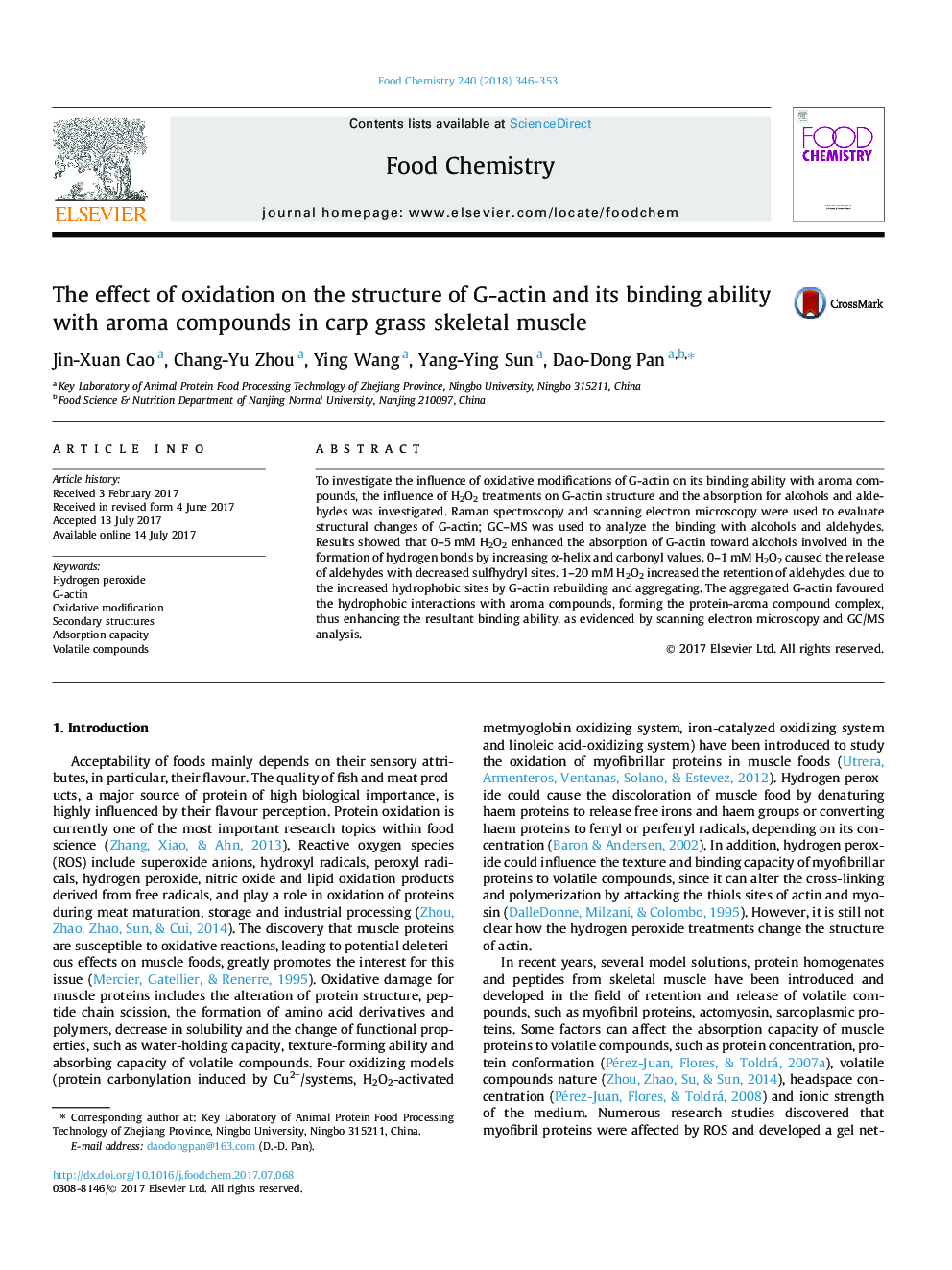| Article ID | Journal | Published Year | Pages | File Type |
|---|---|---|---|---|
| 5132471 | Food Chemistry | 2018 | 8 Pages |
â¢Raman spectroscopy and SEM were used to observe the changes of G-actin.â¢Low oxidant concentration accelerated the stretch of G-actin.â¢High oxidant concentration caused sharp flake aggregation of G-actin.â¢0-5 mM H2O2 enhanced the binding with alcohols by hydrogen bonds.â¢1-20 mM H2O2 increased the binding with aldehydes by surface hydrophobicity and aggregation.
To investigate the influence of oxidative modifications of G-actin on its binding ability with aroma compounds, the influence of H2O2 treatments on G-actin structure and the absorption for alcohols and aldehydes was investigated. Raman spectroscopy and scanning electron microscopy were used to evaluate structural changes of G-actin; GC-MS was used to analyze the binding with alcohols and aldehydes. Results showed that 0-5 mM H2O2 enhanced the absorption of G-actin toward alcohols involved in the formation of hydrogen bonds by increasing α-helix and carbonyl values. 0-1 mM H2O2 caused the release of aldehydes with decreased sulfhydryl sites. 1-20 mM H2O2 increased the retention of aldehydes, due to the increased hydrophobic sites by G-actin rebuilding and aggregating. The aggregated G-actin favoured the hydrophobic interactions with aroma compounds, forming the protein-aroma compound complex, thus enhancing the resultant binding ability, as evidenced by scanning electron microscopy and GC/MS analysis.
